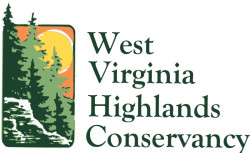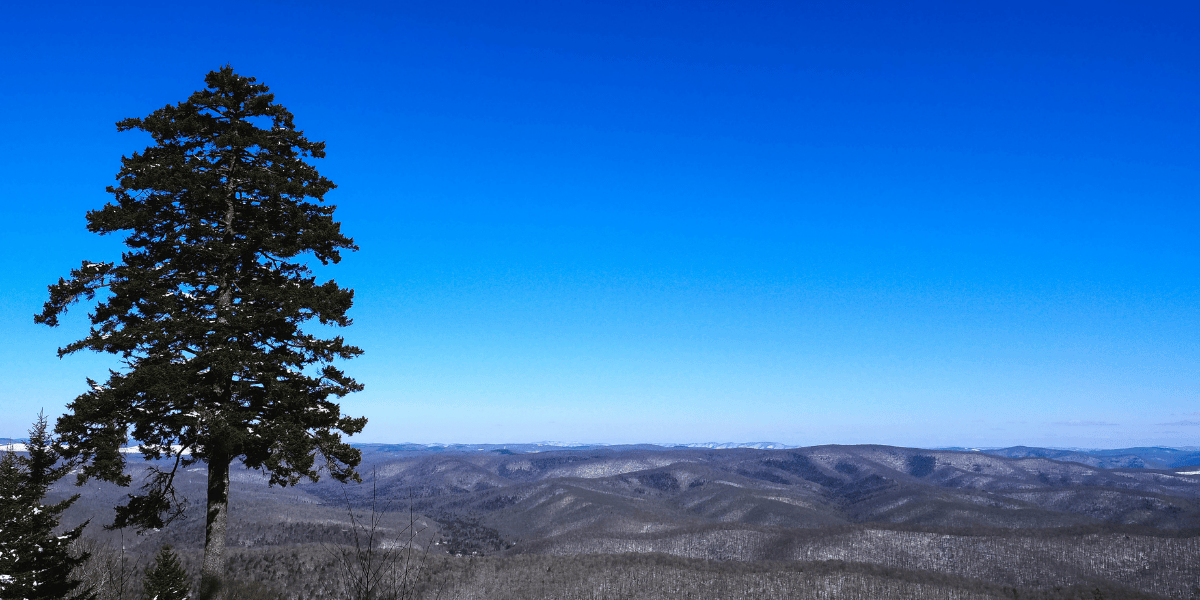By Rick Webb
Today, the red spruce forest of West Virginia’s Allegheny Highlands is but a fragmented, mostly second-growth remnant of the forest that existed before industrial-scale logging began in the late 1800s. Although estimates vary, only about 10 percent of the 1,000,000 acres of original red spruce cover remain. The decimation of this forest had and continues to have, significant negative impacts on ecological and watershed integrity in the Highlands.
The Forest Service proposes to develop a regional-scale red spruce restoration project, including national forests in West Virginia, Virginia, Tennessee, and North Carolina. This is an important proposal that deserves the close attention of those who advocate for the Highlands. This article highlights some of the concerns that have arisen during the initial review process.
The Forest Service published the public announcement (Scoping Letter) for this proposal on August 6, 2024, and provided an opportunity for public comment. As required by the National Environmental Policy Act (NEPA), a Draft Environmental Assessment (DEA) will be completed, and an additional public comment opportunity will be provided before final project decisions are made. The DEA is expected to be completed in 2025.
The Forest Service intends to conduct a NEPA analysis that will “outline various red spruce restoration practices and address multiple vegetation management techniques to create favorable conditions for red spruce . . . .”
As a preliminary step for this analysis, The Nature Conservancy (TNC) convened a Red Spruce Technical Advisory Board (RSTAB) to provide expert and science-informed technical recommendations on red spruce ecosystem restoration methods and impacts. The RSTAB included participants associated with multiple government agencies and non-governmental organizations involved in red spruce restoration, including the Central Appalachian Spruce Restoration Initiative (CASRI). The West Virginia Highlands Conservancy (WVHC), a long-time CASRI partner, was represented on the RSTAB.
The RSTAB report, Red Spruce Restoration Recommendations, was published on June 11, 2024. It includes information and recommendations for a range of red spruce planting and release practices. It also includes a dissenting statement provided by the WVHC (Appendix 2). That statement is provided here (references are to sections of the RSTAB report):
Statement by the West Virginia Highlands Conservancy
The WVHC representatives on the RSTAB appreciate the opportunity to take part in the early development of information for use in the USFS Region 8 Subregional Red Spruce Restoration Environmental Assessment (EA). We are encouraged by the dedication and intelligence brought to the red spruce restoration issue by the other RSTAB participants.
The purpose of the RSTAB report is to provide “expert opinion and science-informed technical recommendations on red spruce ecosystem restoration methods and potential impacts to help inform the NEPA contractor.” (Section 1.1) We want to caution the NEPA contractor concerning several topics included in the report that require additional focus in the EA.
Use of Herbicides and Ecosystem Risk: The RSTAB report describes the use of herbicides to control competing vegetation when planting red spruce and to achieve canopy release. The report states: “Where possible partners recommend the use of herbicides over solely mechanical methods given fewer safety concerns, greater treatment efficiency, and time efficiency.” (Section 4.5.2) The WVHC does not recommend the use of herbicides in the National Forest.
The report further states that “In the long term it will be critical to assess the fate of herbicides on vertebrates and in watershed and soils.” (Section 4.5.2) The WVHC contends that the best available scientific information concerning the fate and both direct and indirect effects of herbicides applied in Central and Southern Appalachian red spruce forests needs to be described and evaluated prior to prescribing herbicide use. This issue should be addressed in the EA.
Commercial Timber Harvest: The RSTAB report provides multiple recommendations or prescriptions for achieving red spruce restoration objectives in conjunction with commercial timber harvest. The report acknowledges that “To achieve restoration objectives and have a project result in a net positive ecological outcome, impacts from commercial spruce release need to be minimized and mitigated for where unavoidable.” (Section 4.5.3) The WVHC is concerned about how prospective ecological outcomes will be characterized, evaluated, and compared in the EA. The benefits of red spruce restoration components of management projects involving commercial timber harvest will need to be weighed against ecosystem damage associated with the timber harvest, including loss of biomass, soil damage, hydrologic alteration, and aquatic ecosystem degradation.
Ecosystem Approach to Restoration: The WVHC supports the RSTAB report’s emphasis on the need for “a thorough environmental baseline assessment emphasizing environmental factors associated with spruce-fir ecosystems, including soil properties, hydrologic integrity, terrestrial and aquatic habitat and biota.” (Section 1.3) The WVHC contends that a baseline assessment, including identification of the extent and causes of ongoing degradation to soils and streams associated with the red spruce ecosystem, is an essential first step if regional red spruce restoration is to be efficient and effective. This type of analysis should properly appear in the EA.
This is the first in a series of articles that will follow the proposed Red Spruce Restoration Project as the planning and review process goes forward.

